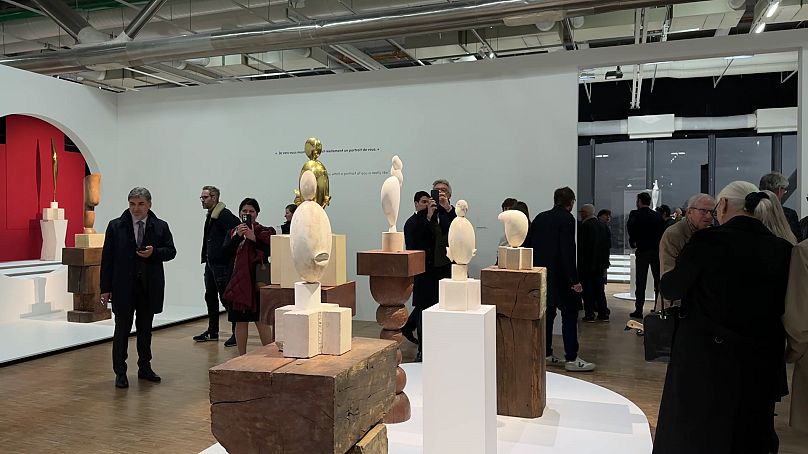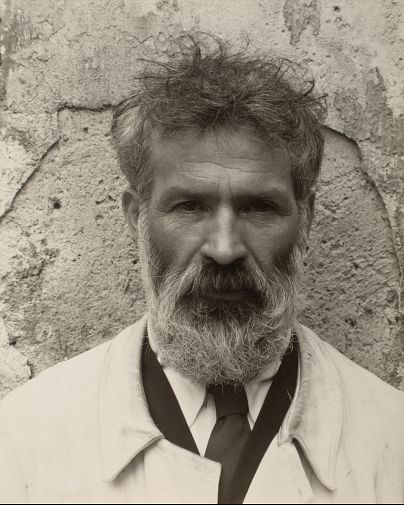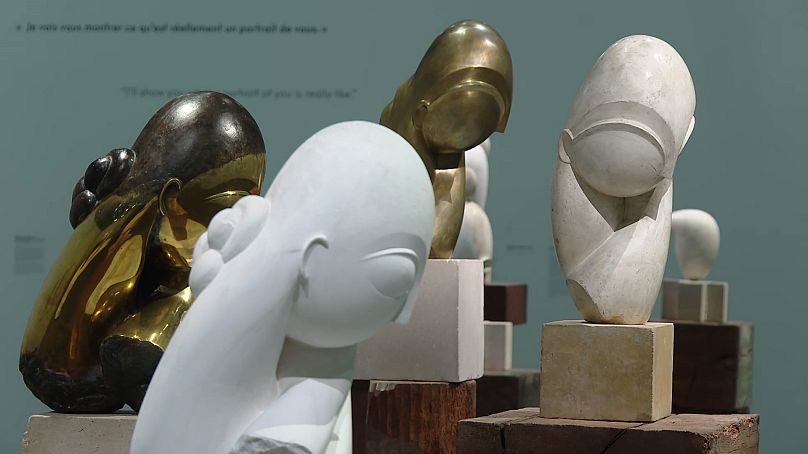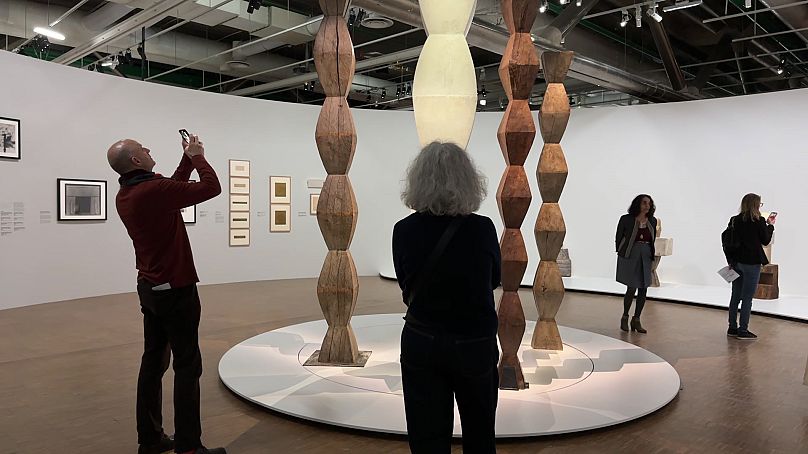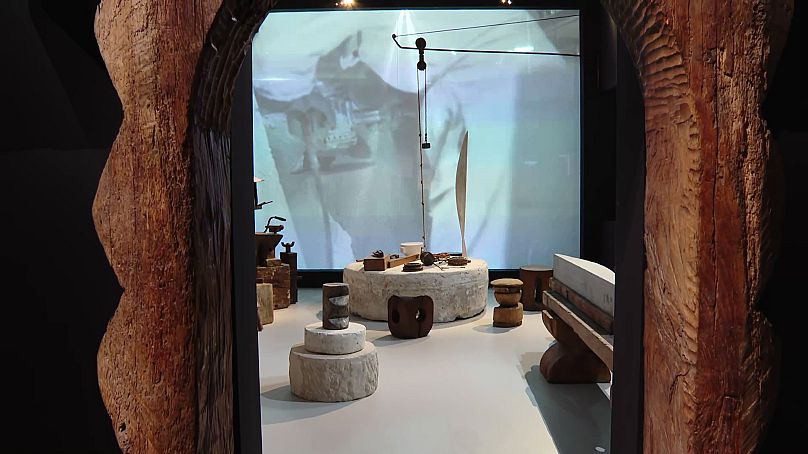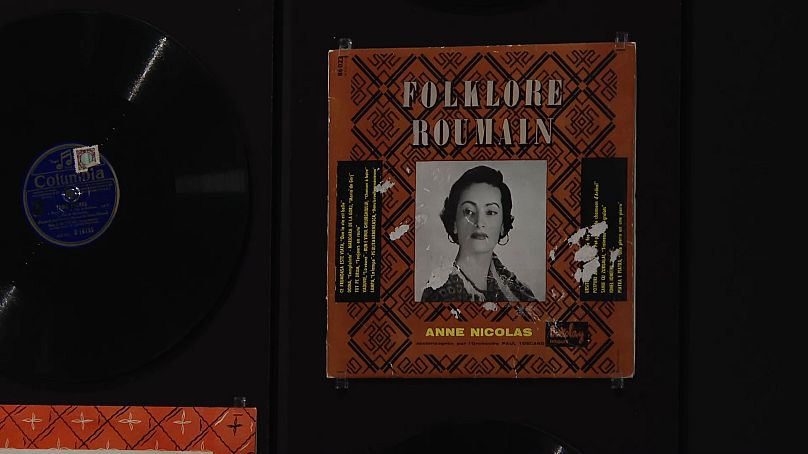Romanian-born Constantin Brancusi, known as one of the pioneers of modern sculpture, gets his biggest retrospective ever at Paris’ Centre Pompidou, with nearly 200 sculptures on show.
Often hailed as one of the founding fathers of modern sculpture, Romanian-born Constantin Brancusi was fully embraced by his adopted country France – and the feeling was mutual.
When the sculptor died in 1957, he left the French government his Paris studio, where he had completed the majority of his works from 1916 until his death. Brancusi’s studio became a jewel in the Centre Pompidou’s collection, and was fully reconstructed on the parvis outside the museum’s walls in 1997.
As the Centre Pompidou undergoes renovation works, the museum has taken the opportunity to give Brancusi’s studio a little change of scenery, bringing the works into the main museum hall for an unprecedented retrospective on the artist’s work.
With nearly 200 sculptures, along with photographs, drawings, films, archives, tools and furniture from his studio, the exhibition gives an intimate look into the life of the artist, one of the most important sculptors of the 20th century.
It also puts works found in Brancusi’s studio in dialogue with other pieces on loan from major institutions around the world, including Tate Modern, MoMa, Guggenheim, the Art Institute of Chicago, the National Museum of Art of Romania and Craiova Art Museum.
“Simplicity is complexity resolved”
Brancusi was born in the small town of Hobita in Romania in 1876, and moved to Paris in 1904, where he would remain for the rest of his life. Working out of several studios in close proximity to one another, in Paris’ 15th Arrondissement, Brancusi attributed a particular importance to the way his pieces interacted with the space around them.
He often played with form to translate this relationship, reducing figures to their simplest visual expressions – like his sculpture “Bird in Space,” which literally changed the definition of art in the United States.
In 1927-1928, the US Customs Office took the sculptor to court because they refused to classify the piece as a work of art, seeing it as an industrial part made of metal. Brancusi won the case.
He often took art critics to task when they described his art as abstract, saying: “They are imbeciles who call my work abstract. That which they call abstract is the most realistic, because what is real is not the exterior but the idea, the essence of things.”
The heart of the exhibition looks at Brancusi’s sources of inspiration – from his mentor and legendary French sculptor Auguste Rodin to Romanian architecture to African and Asian art traditions. It also sheds light on Brancusi’s creative process, including his choice of direct carving.
The rich collection of documents, including letters, press articles, diaries and records chronicle his friendships with other artists like Marcel Duchamp and Amadeo Modigliani, putting his life in a broader artistic and historical context.
Finally, the progression of the exhibition reflects on the artist’s major series of works and the challenges of modernism – including the effects of movement and light, the relationship to space and the ambiguity of form.
Space and time
By the end of his life, Brancusi had stopped creating altogether, focusing instead on his existing works’ relationship with one another within the context of his studio. Whenever he would sell a piece, he’d recreate it in plaster so it would remain in its place, so as not to lose the harmony of the space.
Organisers worked for two years to bring together all the pieces for the new exhibition, with an effort to recreate the ambiance that Brancusi held so dearly. The exhibition features 11 themed rooms filled with 120 works signed by the artist and brought to life by a soundtrack of his favourite music.
“Music had an important place in Brancusi's life,” Valérie Loth, the exhibition’s associate curator, told Euronews Culture. “He had several phonographs in his studio. And at the soirées he organised, which were famous with artists back then, there was always music playing. He’d even played guitar or violin.”
The soundtrack retraces Brancusi’s journey from Romania to France – some songs come from Oltenia, the Romanian region where Brancusi grew up, others are representative of the 20th century art scene in Paris.
“The journey of Brancusi’s life is the journey of a man in exile,” said exhibition curator Ariane Coulondre. “He spent 28 years of his life in Romania and at some point he decided to cross Europe, mostly on foot. It’s only natural that we recreate his extraordinary journey in this exhibition.”
The “Brancusi” exhibition is open to the public at the Centre Pompidou in Paris until 1 July.












